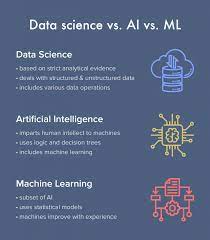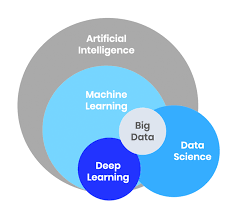The Power of Clickstream Analytics in Understanding User Behaviour
Clickstream analytics is a powerful tool used by businesses to gain insights into user behaviour on their websites or digital platforms. By tracking and analysing the sequence of clicks made by users as they navigate through a website, businesses can gather valuable data that helps them understand user preferences, interactions, and patterns.
How Clickstream Analytics Works
Clickstream analytics works by capturing and recording every click made by a user during their visit to a website. This data includes the pages visited, the time spent on each page, the order of clicks, and any interactions such as form submissions or downloads. By analysing this data, businesses can create detailed user profiles and identify trends that can inform decision-making.
Benefits of Clickstream Analytics
One of the key benefits of clickstream analytics is its ability to provide real-time insights into user behaviour. Businesses can track user journeys in real-time, allowing them to make immediate adjustments to improve user experience and drive conversions. Additionally, clickstream analytics can help businesses identify areas for improvement on their websites, such as optimizing navigation or content placement.
Applications of Clickstream Analytics
Clickstream analytics has a wide range of applications across various industries. E-commerce businesses use clickstream data to understand customer buying patterns and preferences, enabling them to tailor marketing strategies and product offerings. Content publishers use clickstream analytics to optimize content placement and increase engagement. Additionally, clickstream analytics is valuable in measuring the effectiveness of online advertising campaigns.
Challenges in Clickstream Analytics
While clickstream analytics provides valuable insights, there are challenges associated with collecting and analysing large volumes of data. Businesses must ensure the accuracy and reliability of the data collected to make informed decisions. Privacy concerns also arise when collecting user data through clickstream analytics, requiring businesses to adhere to strict data protection regulations.
Conclusion
In conclusion, clickstream analytics is a powerful tool that enables businesses to gain valuable insights into user behaviour on digital platforms. By leveraging clickstream data effectively, businesses can improve user experience, drive conversions, and make informed decisions that lead to business growth.
Understanding Clickstream Analytics: Key Questions and Answers
- What is the Clickstream analysis?
- What is an example of clickstream data?
- Is Google Analytics clickstream data?
- What is clickstream data example?
- What is clickstream analytics?
What is the Clickstream analysis?
Clickstream analysis is a method used to track and analyse the sequence of clicks made by users as they navigate through a website or digital platform. This analysis involves capturing data on the pages visited, the time spent on each page, the order of clicks, and any interactions such as form submissions or downloads. By examining this clickstream data, businesses can gain valuable insights into user behaviour, preferences, and patterns. Clickstream analysis plays a crucial role in helping businesses understand how users interact with their online content, enabling them to make informed decisions to enhance user experience, optimize website performance, and drive business growth.
What is an example of clickstream data?
An example of clickstream data is a sequence of user interactions on a website, such as a user visiting the homepage, clicking on a product category, selecting a specific product, adding it to the cart, and then proceeding to checkout. Each click or action taken by the user is recorded in the clickstream data, providing valuable insights into the user’s behaviour and preferences. By analysing this data, businesses can understand how users navigate their website, identify popular products or pages, and optimise the user experience to drive conversions.
Is Google Analytics clickstream data?
Google Analytics does not provide raw clickstream data in the traditional sense. While Google Analytics tracks user interactions on a website, it aggregates and processes this data to generate reports such as page views, sessions, bounce rates, and other metrics. The platform offers valuable insights into user behaviour and website performance but does not offer the level of granular clickstream data that dedicated clickstream analytics tools provide. Clickstream analytics tools focus specifically on capturing and analysing the detailed sequence of clicks made by users as they navigate through a website, offering more in-depth insights into user interactions and behaviour patterns.
What is clickstream data example?
Clickstream data examples include the sequence of web pages visited by a user during a session, the time spent on each page, the actions taken such as clicking on links or buttons, and any interactions like form submissions or downloads. This data provides valuable insights into user behaviour and preferences, allowing businesses to understand how users navigate their websites and interact with content. By analysing clickstream data examples, businesses can make informed decisions to improve website usability, enhance user experience, and drive conversions.
What is clickstream analytics?
Clickstream analytics refers to the process of tracking and analysing the sequence of clicks made by users as they navigate through a website or digital platform. This data includes information such as the pages visited, time spent on each page, order of clicks, and any interactions like form submissions or downloads. By examining this clickstream data, businesses can gain valuable insights into user behaviour, preferences, and patterns. Clickstream analytics plays a crucial role in helping businesses understand how users engage with their online platforms, enabling them to make informed decisions to enhance user experience, drive conversions, and optimise their digital strategies.




